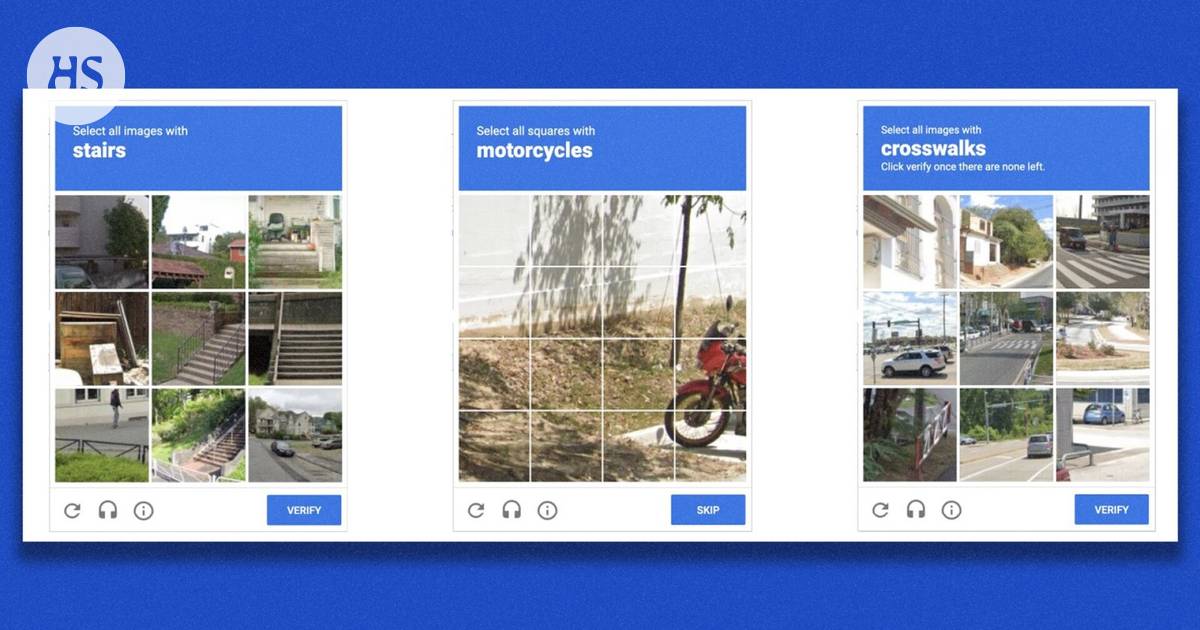Tekoälyt|The artificial intelligence needed thousands of images of 13 objects for training and learned how to log in to the computer.
The summary is made by artificial intelligence and checked by a human.
Websites use captcha to identify people from programs.
Researchers at the Zurich University of Technology developed the Yolo artificial intelligence that solves the captcha.
Yolo recognizes advanced reCAPTCHAv2 objects such as cars and traffic lights after one or two tries.
The researchers published the results in the arXiv service.
On websites there are different ways to find out whether a person or a program is trying to log in to the pages.
The program can automatically bring e.g. spam or malware to the site. That’s why when logging in, you sometimes want to check that a person is reaching the pages.
One way is the so-called captcha. One version of it has a picture puzzle or a picture task, which is familiar to many computer users.
CaptchaN version has a dozen images in grids. The user must click on the images that show the requested object, object or landscape, or its parts.
The user must therefore prove that he recognizes, even from a small hint, for example a crosswalk or a bicycle.
Robots or artificial intelligence have not been able to do the same, so you can avoid scams by logging in.
You also have to click on parts of, say, a motorcycle or a crosswalk.
Show however, now it seems that artificial intelligence can solve pictorial riddles.
The abbreviation captcha comes from the words Completely Automated Public Turing -test to tell Computers and Humans Apart.
In other words, loosely translated “a fully automated public Turing test that determines whether the device is being used by a computer or a human”.
Three researchers from the Zurich Institute of Technology ETH solved captcha picture puzzles with the help of the artificial intelligence they developed.
Artificial intelligence studied the advanced version of captcha. It was developed by the search giant Google and its name is reCAPTCHAv2.
In the tests, it seemed that Yolo, the artificial intelligence previously created by the researchers and then refined, solved the captcha better than the captcha, says website TechXplore.
The name Yolo comes from the words Yor Only Lalso Once, meaning “you only look once” in Finnish.
Researchers Andreas Plesner, Tobias Vontobel and Roger Wattenhofer say Yolo always solves reCAPTCHAv2. If not right away, then the second or third time.
They prove the skills of artificial intelligence in their article published by pre-publication service arXiv.
Yolo objects typically used by reCAPTCHAv2, such as cars, bridges or traffic lights, were made to recognize from the grids.
Then the program practiced recognition using photos. It used approximately 14,000 image pairs. Among other things, they showed views from the streets and roadsides.
The artificial intelligence didn’t have to be 100% accurate in the recognition, because reCAPTCHAv2 allows the user multiple attempts.
Although the model might fail next time, it finally solved the captcha image puzzle. This happened even though the tests had a time limit.
An ordinary user knows this, because he also sometimes has to solve the captcha two or more times.
Yolo only needed 13 different categories of objects or objects to learn captcha.
The objects were usually related to views of roads and streets. It learned to cope with all the picture puzzles.
Tests showed that artificial intelligence can also pass a more sophisticated captcha. Captcha version three, called reCAPTCHAv3, is also commonly used.
